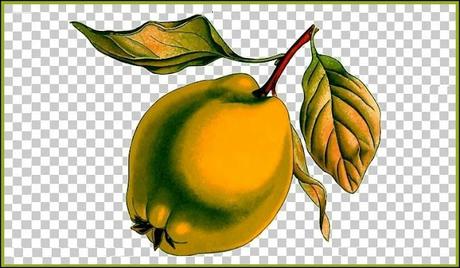
the quince
There are loads more myths in which the quince has a central role. For quince enthusiasts whenever an apple is mentioned they claim it is actually a quince. Think Garden of Eden.Leaping forward a few thousand years the quince’s original Latin name for the fruit was cotoneum and this, in turn, evolved into the French coin or coings. In England in the Middle Ages the Old French name coyn or quoyn was used but by the fourteenth century the words had merged and the name quince was widespread.And talking about names. The surname was introduced into England by followers of Duke William of Normandy at the time of the Conquest of England in 1066, the surname being one of the earliest recorded anywhere in the world. Spellings include de Quincey, Quince, Quincey, Quinsee, Quinsey and others. All derive their names from the pre 3rd century Gallo-Roman personal name Quintas, meaning fifth born, and the name of a famous Roman clan. Amongst the early recordings are those of Henri de Quenci in the Danelaw Documents of England in 1154, whilst from the church registers we have Bennet Quince who married Thomas Gee on December 14th 1592, at St. Dunstan's Stepney.But not Shakespeare’s most famous quince, Peter Quince, the carpenter in A Midsummer Night’s Dream, that derives from quines or quoins, the wedges which carpenters use to steady the pieces they are cutting.Back to the fruit. With the decline of servants they were increasingly regarded as too much bother to cook and so fell out of favour. In the twenty-first century and a new emphasis on home-grown produce this has meant that they are coming back into favour, so:
quince paste
Quince Paste: A RecipeTake a pan with enough water
to cover four peeled and chopped quince
boil then reduce heat and cover
stir for thirty minutes and since
it needs to be smooth then puree
whose bitter taste will cause a wince
so add sugar and vanilla
cook until thick and red and rinse
a terrine mold for the mixture
pour it into the mold then mince
tofu beef with mixed fruit to add
when it’s set and that should convince
your taste buds or any top chef
of a new dish called Terrince Quinnce
Terry Quinn Email ThisBlogThis!Share to TwitterShare to Facebook
